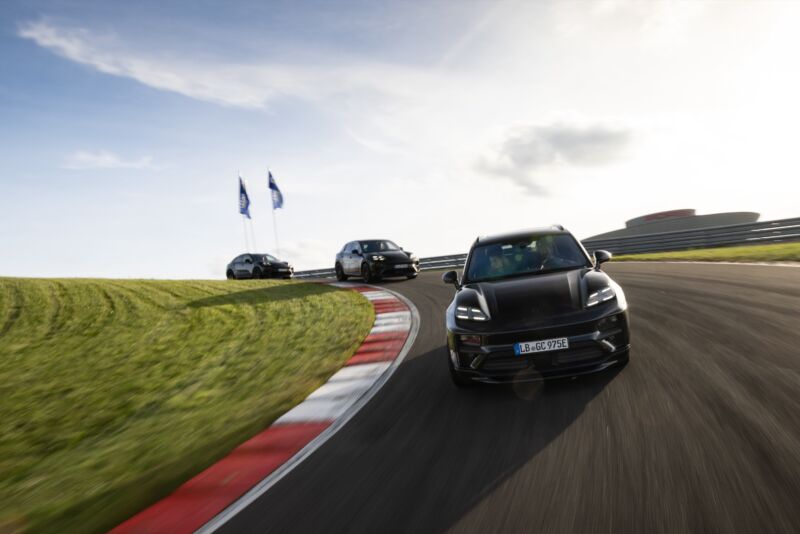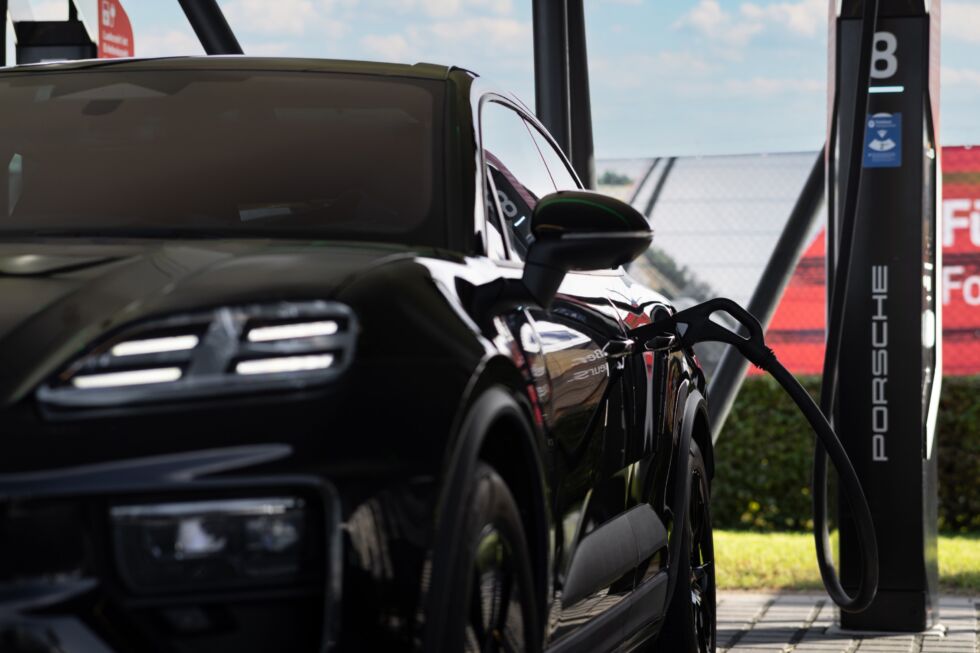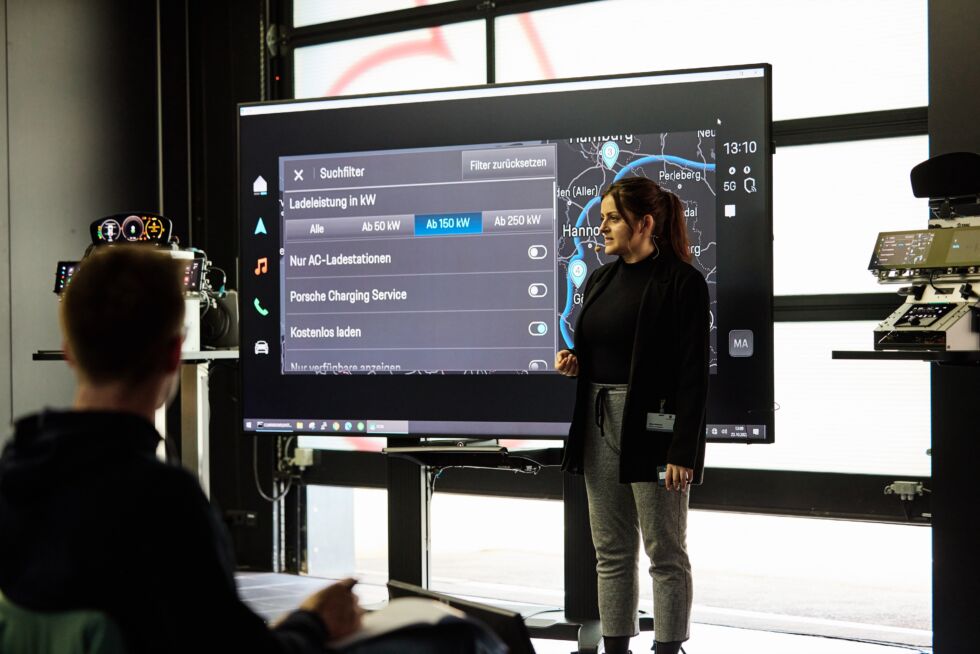macan a new one —
Porsche’s sporty SUV is about to go electric; here’s what to expect.

Enlarge / Porsche’s all-electric Macan is almost on sale.
Porsche
LEIPZIG, Germany—The Porsche Macan has carved out a rather solid reputation for itself over the years, bringing hot hatch-like driving fun to the premium midsize crossover segment. Next year there’s an all-new Macan, an entirely electric one that makes use of a new EV platform shared with corporate sibling Audi. Earlier this summer we spent a few hours driving prototype Macan EVs around Los Angeles, but at the time Porsche was being tight-lipped in terms of technical details. Now, on a visit to the factory in Germany where the cars will be made, we’ve learned a little more.
PPE
The new Macan is one of the first EVs to utilize Premium Platform Electric, which Porsche is developing together with Audi. Other PPE-based EVs due in the near future include the Audi Q6 e-tron SUV, A6 e-tron sedan, and maybe even a station wagon, and if you click some of those links you’ll find deadlines that have come and gone sometime in the past.
That’s because development of PPE hasn’t gone quite as smoothly as everyone at Volkswagen Group would have hoped. A significant factor in that has been software-related trouble at CARIAD, VW Group’s new software division. But the first PPE cars are headed to market soon, and in the case of the Macan, with more than 1.8 million miles (3 million km) of testing under its tires.
-
We were treated to a rather energetic track ride in the new Macan.
Porsche
-
There’s an off-road course next to the Porsche factory in Leipzig.
Porsche
-
The factory in Leipzig (seen here in 2019) has been carbon-neutral since 2021, and can build electric Macans alongside conventional or plug-in hybrid Panameras and Cayennes.
Porsche
New drive units
The Macan’s permanent magnet synchronous electric motors are similar to those found in the Porsche Taycan, and like that EV, the Macan (and all other PPE vehicles) operates at 800 V. The higher voltage means less copper is required for wiring, and there’s an additional payoff in terms of faster DC charging. Porsche says the lamination of magnets on the rotors has been improved over the Taycan, as has the water cooling.
There are slight differences between the front- and rear-axle drive units. The front drive unit sticks with U-shaped hairpin copper wires for the stator, and silicon electronics in the inverter, but the rear drive unit moves to I-pin stator wiring and silicon carbide for the inverter, which enables higher switching frequencies.
-
This is the front drive unit.
Porsche
-
And that same drive unit installed in a powertrain.
Jonathan Gitlin
-
Here’s a rear drive unit.
Porsche
-
And the rear drive unit installed in a rolling chassis.
Jonathan Gitlin
-
Part of our briefing on the new Macan included using VR to examine different internal components.
Jonathan Gitlin
All Macans will use the same front drive unit, but there are two rear drive units available; the most powerful Macan Turbo has a motor that’s 10 mm longer and 20 mm wider at the rear axle. Expect outputs around 603 hp (450 kW) and 737 lb-ft (1,000 Nm) for that top-spec car, which, as I discovered in LA, is a lot of fun to drive.
The powertrain can regenerate up to 240 kW under braking, at deceleration rates of up to 4.3 m/s2. Porsche’s management board continues to fight philosophical battles over the merits of one-pedal driving; for now there’s quite little (as with the Taycan), and you need to press the brake pedal to slow (which will regeneratively brake the car until you pass that deceleration threshold.) But the flip side is a car that is extremely efficient at coasting.
A new battery pack
All Macans will feature a 100 kWh (gross capacity) battery pack. It uses 12 modules with 15 prismatic cells in each, with a nickel cobalt and manganese cell chemistry. It has 23 percent more energy density and much more energy content per module than the Taycan’s pack and uses 60 percent less cobalt. Porsche says the pack has been designed to be much more repairable, with easily replaceable modules.

Porsche
You’ll find charging ports on either side of the Macan—both will accept an AC charge at up to 11 kW, and one will also accept a DC charging plug. At an 800 V DC fast charger, the Macan should charge at up to 270 kW, and go from 10-80 percent state of charge in 22 minutes. If you only have access to a 400 V DC fast charger, the battery pack effectively splits itself into a pair of 400 V batteries that can charge in parallel at up to 150 kW.
(As yet there’s no word from Porsche as to whether it will adopt the North American Charging Standard for US EVs, so expect cars in our market to come with CCS1 plugs, at least until further notice.)
New infotainment

Enlarge / Miriam Mohamad, a UI/UX manager at Porsche, gives Ars a demonstration of the company’s next infotainment system.
Porsche
There’s also a new iteration of PCM, Porsche’s infotainment system. It’s now built on the Android Automotive OS, although the user interface theme will be extremely familiar if you’ve been in a current Porsche. There’s excellent onboard voice control (in 23 languages), supplied by Cerence as opposed to Google Voice Assistant, and there’s an area microphone that can tell which seat you’re sitting in if you issue it a command.
The cockpit also features an ambient light strip that provides visual cues for various events, from indicating that the voice assistant is listening to showing charging status to giving you an egress warning to let you know not to door an approaching cyclist.